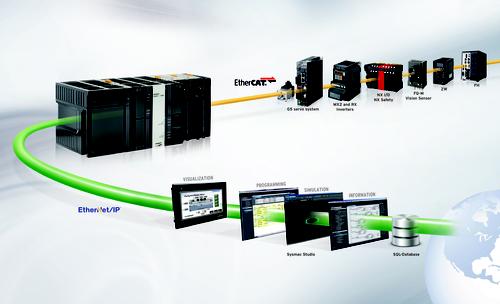System Integration & Small Electric Actuators
October 28, 2014

As the automation and motion control needs of industries using control and drive functions continue to change and progress, the technology that meets those needs must adapt to the growing demand for connectivity, accessibility, and efficiency, all while maintaining a high level of quality and durability. On both the OEM and end-user side, key decision makers have begun to embrace technology that advances the functionality of automation and motion control processes while increasing efficiency and reducing overhead. While each industry uses different configurations of these technologies, there are often clear trends that guide the advancement of the automation and motion control field as a whole.
Two such trends that have recently emerged in the automation and motion control industry include:
The integration of safety, vision and motion control systems into one unified platform
A large shift from small pneumatic actuators to small electric actuators
This last shift is due to recent technological developments that give electric actuators advantages in terms of energy cost, cleanliness, and controllability. Both of these innovations are driven by the need for increased connectivity and efficiency in control operations.

In older automation control systems, multiple aspects of a single operation were driven independently by unique programmable logic controllers (PLCs), vision controllers, safety devices, and motion controllers with little interconnectivity. These controllers would drive the motion, safety, and vision systems separately from one another, only communicating information vital to the success of the operation. This lack of connectivity led to an increased workload for users operating the software and/or machinery when decisions involving multiple systems needed to be made. For example, if a particular component involved in the motion system was not correctly aligned, the user would need to examine the data from the vision system and implement the changes on the motion controller.
With the new development of seamless system integration on one platform, these control decisions can be automated across multiple systems involved in the same process by a single controller that communicates with each system simultaneously. The user is now given real-time control of motion, vision, and safety systems all available via local or remote access with configuration, programming, simulation, and monitoring software available at the touch of a button. The advantage of these new integrated systems can be explained through the analogy of one computer plugged into one printer versus one computer connected to a network with multiple printers available, all of which can be accessed from a single point. Seamlessly integrating each of these control systems into one platform allows for the greatest range of control options available in the industry to date.
This advanced automation platform has been found particularly useful in submicron positioning applications with 4 axes of motion. Operators using the platform were able to use a vision system to determine the target and adjust the position of the motion control system, achieving sub-micron positioning by using the off-the-shelf vision system as an encoder feedback mechanism. This type of integrated control option would not have been available without each system connected on a single network.
About the Author(s)
You May Also Like


.jpg?width=300&auto=webp&quality=80&disable=upscale)


